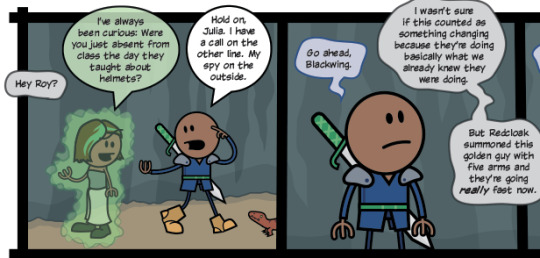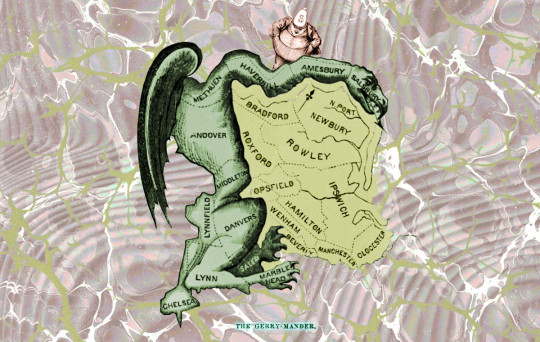#efficient internet marketing
Text
2024's Game-Changing Technologies for Metaverse Development

Picture a universe where virtual and physical worlds blend seamlessly, allowing you to interact with digital elements in real-time. As 2024 draws near, groundbreaking technologies are shaping this metaverse, making such interactions more immersive and dynamic than ever.
The metaverse, an expansive network of virtual environments, is evolving rapidly as we approach 2024, driven by several key technologies. Virtual Reality (VR) and Augmented Reality (AR) are at the forefront, enabling immersive experiences that blend the physical and digital worlds. VR technology has advanced significantly, offering users enhanced graphics, realistic simulations, and responsive feedback that create fully immersive digital environments.
AR enhances the physical world by overlaying digital information, enriching experiences in retail, healthcare, and entertainment through interactive and engaging environments.
Blockchain technology is essential for the metaverse, providing a secure and transparent method for managing digital assets and transactions. Non-fungible tokens (NFTs) allow users to own unique digital assets like virtual real estate and art, while smart contracts facilitate automated and secure transactions. The decentralized nature of blockchain promotes trust and reliability, making it a crucial component of the metaverse's infrastructure.
Artificial Intelligence (AI) further enhances user experiences by creating intelligent virtual agents, personalized interactions, and realistic simulations. AI-driven non-player characters (NPCs) provide engaging and adaptive experiences, and AI technologies enable natural language processing and speech recognition for seamless communication between users and virtual environments.
Edge computing and 5G technology are critical for the seamless operation of the metaverse. By bringing data processing closer to users, edge computing reduces latency and improves the responsiveness of virtual environments. 5G networks provide the high-speed internet required for real-time interactions, supporting scalable and complex virtual environments.
The Internet of Things (IoT) and spatial computing further enhance the metaverse by capturing physical movements and translating them into virtual actions, creating realistic and immersive experiences.
Elevate your business with Intelisync's cutting-edge metaverse solutions. Reach out to Intelisync today and learn how our advanced technologies in VR, AR, AI, and blockchain can revolutionize your operations, enhance customer engagement, and drive your Learn more...
#AI-driven NPCs#AR/VR for interactive product experiences#Artificial Intelligence (AI)#Augmented Reality (AR)#Blockchain#blockchain for secure transactions#Blockchain Technology#Edge Computing and 5G Technology#How Intelisync Uses this Technology for Growing Client Business#Increase in Engagement#Intelisync’s Metaverse Solution for Retail Business#Internet of Things (IoT) and Spatial Computing#IoT devices#Market Expansion#Metaverse Development#Metaverse development company#metaverse game development#Operational Efficiency#Personalization with AI#Sales Growth#Secure Transactions with Blockchain#smart contracts#social VR platforms and games.#Top 5 Technologies for Metaverse Development in 2024#Virtual Reality (VR)#Virtual Reality (VR) and Augmented Reality (AR)#Virtual Showroom#What is the Metaverse?
0 notes
Text
Battery-operated Remote Terminal Units Market Research, Size, Share, Analysis, Overview and Regional Outlook Study 2017 – 2032
The market for Remote Terminal Units (RTUs) that are battery-operated allows them to function in isolated or off-grid regions where access to a reliable power supply is restricted. RTUs are electronic devices used to monitor and manage remote equipment and processes in many different industries, such as oil and gas, water and wastewater management, power distribution, and telecommunications. Here is a summary of the market for battery-operated RTUs, including information on demand:
Market Overview: Due to a number of circumstances, the market for battery-operated RTUs has been expanding. The need for battery-operated RTUs has been fueled by the necessity for remote monitoring and control capabilities in various industries, particularly in places with weak power infrastructure. These devices enable efficient monitoring and control of remote assets without the requirement for a continual external power source thanks to their dependable and autonomous operation.
Demand Drivers:
1. Real-time monitoring and control of assets: situated in remote or isolating locations are necessary in many businesses. Without the requirement for a sizable power infrastructure or reliance on cable connections, battery-operated RTUs allow for effective data gathering, monitoring, and control of these assets.
2. Applications Off-Grid: In off-grid applications where access to a dependable power supply is restricted or nonexistent, battery-operated RTUs are widely used. Examples include remote water pumping stations in rural areas, environmental monitoring stations, remote weather monitoring stations, and remote oil and gas wellheads.
3. Emergency and Temporary Installations: Whereas immediate deployment is necessary, battery-powered RTUs are also used in emergency and temporary installations. When catastrophe recovery, building projects, or temporary infrastructure installations are taking place, these machines can instantly provide remote monitoring and control capabilities.
4. Environmental Monitoring: Data collection from remote weather stations, air quality sensors, and water quality sensors are all important aspects of environmental monitoring that battery-operated RTUs play a key role in. Continuous monitoring is made possible in remote or environmentally delicate locations by these equipment.
5. IoT Connectivity: The need for battery-operated RTUs has increased as the Internet of Things (IoT) is becoming more widely used in a variety of businesses. These devices are essential parts of IoT networks because they provide seamless data transmission, communication, and control between remote assets and central management systems.
Here are some of the key benefits for Stakeholders:
Remote Monitoring and Control
Flexibility and Mobility
Cost-Effective Deployment
Resilience to Power Outages
Integration with IoT and Smart Grids
Increased Data Accessibility
Environmental Monitoring and Compliance
Rapid Deployment for Emergency Response
Redundancy and Reliability
Scalability and Future-Proofing
We recommend referring our Stringent datalytics firm, industry publications, and websites that specialize in providing market reports. These sources often offer comprehensive analysis, market trends, growth forecasts, competitive landscape, and other valuable insights into this market.
By visiting our website or contacting us directly, you can explore the availability of specific reports related to this market. These reports often require a purchase or subscription, but we provide comprehensive and in-depth information that can be valuable for businesses, investors, and individuals interested in this market.
“Remember to look for recent reports to ensure you have the most current and relevant information.”
Click Here, To Get Free Sample Report: https://stringentdatalytics.com/sample-request/battery-operated-remote-terminal-units-market/10333/
Market Segmentations:
Global Battery-operated Remote Terminal Units Market: By Company
• SIEMENS
• SENECA
• Omniflex
• King Pigeon Communication Co.,Limited
• Servelec Group
• TEKBOX
• Micro Sensor Co., Ltd.
• Hitachi Group
• Remsdaq Ltd
Global Battery-operated Remote Terminal Units Market: By Type
• GPRS
• GSM
• Modular
• Others
Global Battery-operated Remote Terminal Units Market: By Application
• Power Industry
• Government and Utilities
• Industrial
Global Battery-operated Remote Terminal Units Market: Regional Analysis
The regional analysis of the global Battery-operated Remote Terminal Units market provides insights into the market's performance across different regions of the world. The analysis is based on recent and future trends and includes market forecast for the prediction period. The countries covered in the regional analysis of the Battery-operated Remote Terminal Units market report are as follows:
North America: The North America region includes the U.S., Canada, and Mexico. The U.S. is the largest market for Battery-operated Remote Terminal Units in this region, followed by Canada and Mexico. The market growth in this region is primarily driven by the presence of key market players and the increasing demand for the product.
Europe: The Europe region includes Germany, France, U.K., Russia, Italy, Spain, Turkey, Netherlands, Switzerland, Belgium, and Rest of Europe. Germany is the largest market for Battery-operated Remote Terminal Units in this region, followed by the U.K. and France. The market growth in this region is driven by the increasing demand for the product in the automotive and aerospace sectors.
Asia-Pacific: TheAsia-Pacific region includes Singapore, Malaysia, Australia, Thailand, Indonesia, Philippines, China, Japan, India, South Korea, and Rest of Asia-Pacific. China is the largest market for Battery-operated Remote Terminal Units in this region, followed by Japan and India. The market growth in this region is driven by the increasing adoption of the product in various end-use industries, such as automotive, aerospace, and construction.
Middle East and Africa: The Middle East and Africa region includes Saudi Arabia, U.A.E, South Africa, Egypt, Israel, and Rest of Middle East and Africa. The market growth in this region is driven by the increasing demand for the product in the aerospace and defense sectors.
South America: The South America region includes Argentina, Brazil, and Rest of South America. Brazil is the largest market for Battery-operated Remote Terminal Units in this region, followed by Argentina. The market growth in this region is primarily driven by the increasing demand for the product in the automotive sector.
Visit Report Page for More Details: https://stringentdatalytics.com/reports/battery-operated-remote-terminal-units-market/10333/
Reasons to Purchase Battery-operated Remote Terminal Units Market Report:
• To obtain insights into industry trends and dynamics, including market size, growth rates, and important factors and difficulties. This study offers insightful information on these topics.
• To identify important participants and rivals: This research studies can assist companies in identifying key participants and rivals in their sector, along with their market share, business plans, and strengths and weaknesses.
• To comprehend consumer behaviour: these research studies can offer insightful information about customer behaviour, including preferences, spending patterns, and demographics.
• To assess market opportunities: These research studies can aid companies in assessing market chances, such as prospective new goods or services, fresh markets, and new trends.
In general, market research studies offer companies and organisations useful data that can aid in making decisions and maintaining competitiveness in their industry. They can offer a strong basis for decision-making, strategy formulation, and company planning.
About US:
Stringent Datalytics offers both custom and syndicated market research reports. Custom market research reports are tailored to a specific client's needs and requirements. These reports provide unique insights into a particular industry or market segment and can help businesses make informed decisions about their strategies and operations.
Syndicated market research reports, on the other hand, are pre-existing reports that are available for purchase by multiple clients. These reports are often produced on a regular basis, such as annually or quarterly, and cover a broad range of industries and market segments. Syndicated reports provide clients with insights into industry trends, market sizes, and competitive landscapes. By offering both custom and syndicated reports, Stringent Datalytics can provide clients with a range of market research solutions that can be customized to their specific needs
Contact US:
Stringent Datalytics
Contact No - +1 346 666 6655
Email Id - [email protected]
Web - https://stringentdatalytics.com/
#Battery-operated Remote Terminal Units#RTU Market#Remote Monitoring#Wireless RTU#Industrial Automation#Battery-powered RTU#IoT (Internet of Things)#Energy Efficiency#Data Collection#Telemetry#Remote Control#Battery-powered Sensors#SCADA (Supervisory Control and Data Acquisition)#Energy Management#Off-grid Applications#Renewable Energy#Battery Technology#Remote Sensing#Communication Protocols#Edge Computing#Connectivity Solutions#Remote Data Acquisition#Condition Monitoring#Asset Management.
0 notes
Text
How does market competition affect marketing efficiency?
Market competition can have a significant impact on marketing efficiency. In a competitive market, businesses are vying for the same customers and trying to stand out from their competitors.
This can result in businesses investing heavily in marketing campaigns to reach their target audience, which can increase marketing costs.
“While we all know the old marketing adage that it costs more to acquire a new customer than to retain an old one, companies in today’s competitive economy know they need to constantly engage new prospects and invest in solid acquisition strategies” – Data Axle’s B2B Lead Generation Report
However, competition can also drive businesses to be more efficient in their marketing efforts.
With so many companies fighting for attention, businesses that are able to create more effective marketing strategies will have a better chance of standing out from the crowd.
One way that competition can improve marketing efficiency is by encouraging businesses to focus on their target audience.
When there are many companies competing for the same customers, it becomes essential to understand what those customers want and need.
This means taking the time to research and analyze consumer behavior and preferences. By doing so, businesses can create more targeted and effective marketing campaigns that resonate with their audience.
Competition can also drive innovation in marketing. As businesses try to differentiate themselves from their competitors, they may experiment with new marketing techniques or platforms.
This can lead to the development of new, more efficient marketing strategies that can help businesses stand out in a crowded market.
“The digital landscape is evolving fast, so it is crucial to use technology to improve your business performance and stay ahead of the competition” – MarketingProfs
On the other hand, market competition can also lead to a race to the bottom in terms of pricing and quality.
In an effort to compete on price, some businesses may sacrifice quality or cut corners in their marketing efforts, which can ultimately harm their brand reputation and customer loyalty.

Image Source - LinkedIn Marketing Solutions
In conclusion, market competition can have both positive and negative effects on marketing efficiency.
While it can drive businesses to be more efficient and innovative in their marketing efforts, it can also lead to increased costs and a focus on short-term gains over long-term brand building.
Ultimately, it is up to each business to find the right balance between competition and efficiency in its marketing strategies.
Here's related information that you may find helpful – Ready to increase average order value [AOV] in your business? – [16 proven marketing tips to succeed while a potential customer is in transaction mode]
0 notes
Text
The long, bloody lineage of private equity's looting

Tomorrow (June 3) at 1:30PM, I’m in Edinburgh for the Cymera Festival on a panel with Nina Allen and Ian McDonald.
Monday (June 5) at 7:15PM, I’m in London at the British Library with my novel Red Team Blues, hosted by Baroness Martha Lane Fox.

Fans of the Sopranos will remember the “bust out” as a mob tactic in which a business is taken over, loaded up with debt, and driven into the ground, wrecking the lives of the business’s workers, customers and suppliers. When the mafia does this, we call it a bust out; when Wall Street does it, we call it “private equity.”
It used to be that we rarely heard about private equity, but then, as national chains and iconic companies started to vanish, this mysterious financial arrangement popped up with increasing frequency. When a finance bro’s presentation on why Olive Garden needed to be re-orged when viral, there was a lot off snickering about the decline of a tacky business whose value prop was unlimited carbs. But the bro was working for Starboard Value, a hedge fund that specialized in buhying out and killing off companies, pocketing billions while destroying profitable businesses.
https://www.salon.com/2014/09/17/the_real_olive_garden_scandal_why_greedy_hedge_funders_suddenly_care_so_much_about_breadsticks/
Starboard Value’s game was straightforward: buy a business, load it with debt, sell off its physical plant — the buildings it did business out of — pay itself, and then have the business lease back the buildings, bleeding out money until it collapsed. They pulled it with Red Lobster,and the point of the viral Olive Garden dis track was to soften up the company for its own bust out.
The bust out tactic wasn’t limited to mocking middlebrow family restaurants. For years, the crooks who ran these ops did a brisk trade in blaming the internet. Why did Sears tank? Everyone knows that the 19th century business was an antique, incapable of mounting a challenge in the age of e-commerce. That was a great smokescreen for an old-fashioned bust out that saw corporate looters make off with hundreds of millions, leaving behind empty storefronts and emptier pension accounts for the workers who built the wealth the looters stole:
https://prospect.org/economy/vulture-capitalism-killed-sears/
Same goes for Toys R Us: it wasn’t Amazon that killed the iconic toy retailer — it was the PE bosses who extracted $200m from the chain, then walked away, hands in pockets and whistling, while the businesses collapsed and the workers got zero severance:
https://www.washingtonpost.com/news/business/wp/2018/06/01/how-can-they-walk-away-with-millions-and-leave-workers-with-zero-toys-r-us-workers-say-they-deserve-severance/
It’s a good racket — for the racketeers. Private equity has grown from a finance sideshow to Wall Street’s apex predator, and it’s devouring the real economy through a string of audactious bust outs, each more consequential and depraved than the last.
As PE shows that it can turn profitable businesses gigantic windfalls, sticking the rest of us with the job of sorting out the smoking craters they leave behind, more and more investors are piling in. Today, the PE sector loves a rollup, which is when they buy several related businesses and merge them into one firm. The nominal business-case for a rollup is that the new, bigger firm is more “efficient.” In reality, a rollup’s strength is in eliminating competition. When all the pet groomers, or funeral homes, or urgent care clinics for ten miles share the same owner, they can raise prices, lower wages, and fuck over suppliers.
They can also borrow. A quirk of the credit markets is that a standalone small business is valued at about 3–5x its annual revenues. But if that business is part of a large firm, it is valued at 10–20x annual turnover. That means that when a private equity company rolls up a comedy club, ad agency or water bottler (all businesses presently experiencing PE rollup), with $1m in annual revenues, it shows up on the PE company’s balance sheet as an asset worth $10–20m. That’s $10–20m worth of collateral the PE fund can stake for loans that let it buy and roll up more small businesses.
2.9 million Boomer-owned businesses, employing 32m people, are expected to sell in the next couple years as their owners retire. Most of these businesses will sell to PE firms, who can afford to pay more for them as a prelude to a bust out than anyone intending to operate them as a productive business could ever pay:
https://pluralistic.net/2022/12/16/schumpeterian-terrorism/#deliberately-broken
PE’s most ghastly impact is felt in the health care sector. Whole towns’ worth of emergency rooms, family practices, labs and other health firms have been scooped up by PE, which has spent more than $1t since 2012 on health acquisitions:
https://pluralistic.net/2022/11/17/the-doctor-will-fleece-you-now/#pe-in-full-effect
Once a health care company is owned by PE, it is significantly more likely to commit medicare fraud. It also cuts wages and staffing for doctors and nurses. PE-owned facilities do more unnecessary and often dangerous procedures. Appointments get shorter. The companies get embroiled in kickback scandals. PE-backed dentists hack away at children’s mouths, filling them full of root-canals.
https://pluralistic.net/2022/11/17/the-doctor-will-fleece-you-now/#pe-in-full-effect
The Healthcare Private Equity Association boasts that its members are poised to spend more than $3t to create “the future of healthcare.”
https://hcpea.org/#!event-list
As bad as PE is for healthcare, it’s worse for long-term care. PE-owned nursing homes are charnel houses, and there’s a particularly nasty PE scam where elderly patients are tricked into signing up for palliative care, which is never delivered (and isn’t needed, because the patients aren’t dying!). These fake “hospices” get huge payouts from medicare — and the patient is made permanently ineligible for future medicare, because they are recorded being in their final decline:
https://pluralistic.net/2023/04/26/death-panels/#what-the-heck-is-going-on-with-CMS
Every part of the health care sector is being busted out by PE. Another ugly PE trick, the “club deal,” is devouring the medical supply business. Club deals were huge in the 2000s, destroying rent-controlled housing, energy companies, Mervyn’s department stores, Harrah’s, and Old Country Joe. Now it’s doing the same to medical supplies:
https://pluralistic.net/2021/05/14/billionaire-class-solidarity/#club-deals
Private equity is behind the mass rollup of single-family homes across America. Wall Street landlords are the worst landlords in America, who load up your rent with junk fees, leave your home in a state of dangerous disrepair, and evict you at the drop of a hat:
https://pluralistic.net/2021/08/16/die-miete-ist-zu-hoch/#assets-v-human-rights
As these houses decay through neglect, private equity makes a bundle from tenants and even more borrowing against the houses. In a few short years, much of America’s desperately undersupplied housing stock will be beyond repair. It’s a bust out.
You know all those exploding trains filled with dangerous chemicals that poison entire towns? Private equity bust outs:
https://pluralistic.net/2022/02/04/up-your-nose/#rail-barons
Where did PE come from? How can these people look themselves in the mirror? Why do we let them get away with it? How do we stop them?
Today in The American Prospect, Maureen Tkacik reviews two new books that try to answer all four of these questions, but really only manage to answer the first three:
https://prospect.org/culture/books/2023-06-02-days-of-plunder-morgenson-rosner-ballou-review/
The first of these books is These Are the Plunderers: How Private Equity Runs — and Wrecks — America by Gretchen Morgenson and Joshua Rosner:
https://www.simonandschuster.com/books/These-Are-the-Plunderers/Gretchen-Morgenson/9781982191283
The second is Plunder: Private Equity’s Plan to Pillage America, by Brendan Ballou:
https://www.hachettebookgroup.com/titles/brendan-ballou/plunder/9781541702103/
Both books describe the bust out from the inside. For example, PetSmart — looted for $30 billion by RaymondSvider and his PE fund BC Partners — is a slaughterhouse for animals. The company systematically neglects animals — failing to pay workers to come in and feed them, say, or refusing to provide backup power to run during power outages, letting animals freeze or roast to death. Though PetSmart has its own vet clinics, the company doesn’t want to pay its vets to nurse the animals it damages, so it denies them care. But the company is also too cheap to euthanize those animals, so it lets them starve to death. PetSmart is also too cheap to cremate the animals, so its traumatized staff are ordered to smuggle the dead, rotting animals into random dumpsters.
All this happened while PetSmart’s sales increased by 60%, matched by growth in the company’s gross margins. All that money went to the bust out.
https://www.forbes.com/sites/antoinegara/2021/09/27/the-30-billion-kitty-meet-the-investor-who-made-a-fortune-on-pet-food/
Tkacik says these books show that we’re finally getting wise to PE. Back in the Clinton years, the PE critique painted the perps as sharp operators who reduced quality and jacked up prices. Today, books like these paint these “investors” as the monsters they are — crooks whose bust ups are crimes, not clever finance hacks.
Take the Carlyle Group, which pioneered nursing home rollups. As Carlyle slashed wages, its workers suffered — but its elderly patients suffered more. Thousands of Carlyle “customers” died of “dehydration, gangrenous bedsores, and preventable falls” in the pre-covid years.
https://www.washingtonpost.com/business/economy/opioid-overdoses-bedsores-and-broken-bones-what-happened-when-a-private-equity-firm-sought-profits-in-caring-for-societys-most-vulnerable/2018/11/25/09089a4a-ed14-11e8-baac-2a674e91502b_story.html
KKR, another PE monster, bought a second-hand chain of homes for mentally disabled adults from another PE company, then squeezed it for the last drops of blood left in the corpse. KKR cut wages to $8/hour and increased shifts to 36 hours, then threatened to have workers who went home early arrested and charged with “patient abandonment.” Many of these homes were often left with no staff at all, with patients left to starve and stew in their own waste.
PE loves to pick on people who can’t fight back: kids, sick people, disabled people, old people. No surprise, then, that PE loves prisons — the ultimate captive audience. HIG Capital is a $55b fund that owns TKC Holdings, who got the contract to feed the prisoners at 400 institutions. They got the contract after the prisons fired Aramark, owned by PE giant Warburg Pincus, whose food was so inedible that it provoked riots. TKC got a million bucks extra to take over the food at Michigan’s Kinross Correctional Facility, then, incredibly, made the food worse. A chef who refused to serve 100 bags of rotten potatoes (“the most disgusting thing I’ve seen in my life”) was fired:
https://www.wzzm13.com/article/news/local/michigan/prison-food-worker-i-was-fired-for-refusing-to-serve-rotten-potatoes/69-467297770
TKC doesn’t just operate prison kitchens — it operates prison commissaries, where it gouges prisoners on junk food to replace the inedible slop it serves in the cafeteria. The prisoners buy this food with money they make working in the prison workshops, for $0.10–0.25/hour. Those workshops are also run by TKC.
Tkacic traces private equity back to the “corporate raiders” of the 1950s and 1960s, who “stealthily borrowed money to buy up enough shares in a small or midsized company to control its biggest bloc of votes, then force a stock swap and install himself as CEO.”
The most famous of these raiders was Eli Black, who took over United Fruit with this gambit — a company that had a long association with the CIA, who had obligingly toppled democratically elected governments and installed dictators friendly to United’s interests (this is where the term “banana republic” comes from).
Eli Black’s son is Leon Black, a notorious PE predator. Leon Black got his start working for the junk-bonds kingpin Michael Milken, optimizing Milken’s operation, which was the most terrifying bust out machine of its day, buying, debt-loading and wrecking a string of beloved American businesses. Milken bought 2,000 companies and put 200 of them through bankruptcy, leaving the survivors in a brittle, weakened state.
It got so bad that the Business Roundtable complained about the practice to Congress, calling Milken, Black, et al, “a small group is systematically extracting the equity from corporations and replacing it with debt, and incidentally accumulating major wealth.”
Black stabbed Milken in the back and tanked his business, then set out on his own. Among the businesses he destroyed was Samsonite, “a bankrupt-but-healthy company he subjected to 12 humiliating years of repeated fee extractions, debt-funded dividend payments, brutal plant closings, and hideous schemes to induce employees to buy its worthless stock.”
The money to buy Samsonite — and many other businesses — came through a shadowy deal between Black and John Garamendi, then a California insurance commissioner, now a California congressman. Garamendi helped Black buy a $6b portfolio of junk bonds from an insurance company in a wildly shady deal. Garamendi wrote down the bonds by $3.9b, stealing money “from innocent people who needed the money to pay for loved ones’ funerals, irreparable injuries, etc.”
Black ended up getting all kinds of favors from powerful politicians — including former Connecticut governor John Rowland and Donald Trump. He also wired $188m to Jeffrey Epstein for reasons that remain opaque.
Black’s shady deals are a marked contrast with the exalted political circles he travels in. Despite private equity’s obviously shady conduct, it is the preferred partner for cities and states, who buy everything from ambulance services to infrastructure from PE-owned companies, with disastrous results. Federal agencies turn a blind eye to their ripoffs, or even abet them. 38 state houses passed legislation immunizing nursing homes from liability during the start of the covid crisis.
PE barons are shameless about presenting themselves as upstanding cits, unfairly maligned. When Obama made an empty promise to tax billionaires in 2010, Blackstone founder SteveS chwarzman declared, “It’s a war. It’s like when Hitler invaded Poland in 1939.”
Since we’re on the subject of Hitler, this is a good spot to bring up Monowitz, a private-sector satellite of Auschwitz operated by IG Farben as a slave labor camp to make rubber and other materiel it supplied at a substantial markup to the wermacht. I’d never heard of Monowitz, but Tkacik’s description of the camp is chilling, even in comparison to Auschwitz itself.
Farben used slave laborers from Auschwitz to work at its rubber plant, but was frustrated by the logistics of moving those slaves down the 4.5m stretch of road to the facility. So the company bought 25,000 slaves — preferring children, who were cheaper — and installed them in a co-located death-camp called Monowitz:
https://www.commentary.org/articles/r-tannenbaum/the-devils-chemists-by-josiah-e-dubois-jr/
Monowitz was — incredibly — worse than Auschwitz. It was so bad, the SS guards who worked at it complained to Berlin about the conditions. The SS demanded more hospitals for the workers who dropped from beatings and overwork — Farben refused, citing the cost. The factory never produced a steady supply of rubber, but thanks to its gouging and the brutal treatment of its slaves, the camp was still profitable and returned large dividends to Farben’s investors.
Apologists for slavery sometimes claim that slavers are at least incentivized to maintain the health of their captive workforce. This was definitely not true of Farben. Monowitz slaves died on average after three months in the camp. And Farben’s subsidiary, Degesch, made the special Zyklon B formulation used in Auschwitz’s gas chambers.
Tkacik’s point is that the Nazis killed for ideology and were unimaginably cruel. Farben killed for money — and they were even worse. The banality of evil gets even more banal when it’s done in service to maximizing shareholder value.
As Farben historian Joseph Borkin wrote, the company “reduced slave labor to a consumable raw material, a human ore from which the mineral of life was systematically extracted”:
https://www.scribd.com/document/517797736/The-Crime-and-Punishment-of-I-G-Farben
Farben’s connection to the Nazis was a the subject of Germany’s Master Plan: The Story of Industrial Offensive, a 1943 bestseller by Borkin, who was also an antitrust lawyer. It described how Farben had manipulated global commodities markets in order to create shortages that “guaranteed Hitler’s early victories.”
Master Plan became a rallying point in the movement to shatter corporate power. But large US firms like Dow Chemical and Standard Oil waged war on the book, demanding that it be retracted. Borkin was forced into resignation and obscurity in 1945.
Meanwhile, in Nuremberg, 24 Farben executives were tried for their war crimes, and they cited their obligations to their shareholders in their defense. All but five were acquitted on this basis.
Seen in that light, the plunderers of today’s PE firms are part of a long and dishonorable tradition, one that puts profit ahead of every other priority or consideration. It’s a defense that wowed the judges at Nuremberg, so should we be surprised that it still plays in 2023?
Tkacik is frustrated that neither of these books have much to offer by way of solutions, but she understands why that would be. After all, if we can’t even close the carried interest tax loophole, how can we hope to do anything meaningful?
“Carried interest” comes up in every election cycle. Most of us assume it has something to do with “interest payments,” but that’s not true. The carried interest loophole relates to the “interest” that 16th-century sea captains had in their cargo. It’s a 600-year-old tax loophole that private equity bosses use to pay little or no tax on their billions. The fact that it’s still on the books tells you everything you need to know about whether our political class wants to do anything about PE’s plundering.
Notwithstanding Tkacik’s (entirely justified) skepticism of the weaksauce remedies proposed in these books, there is some hope of meaningful action. Private equity’s rollups are only possible because they skate under the $101m threshold for merger scrutiny. However, there is good — but unenforced — law that allows antitrust enforcers to block these mergers. This is the “incipiency standard” — Sec 7 of the Clayton Act — the idea that a relatively small merger might not be big enough to trigger enforcement action on its own, but regulators can still act to block it if it creates an incipient monopoly.
https://pluralistic.net/2022/12/16/schumpeterian-terrorism/#deliberately-broken
The US has a new crop of aggressive — fearless — top antitrust enforcers and they’ve been systematically reviving these old laws to go after monopolies.
That’s long overdue. Markets are machines for eroding our moral values: “In comparison to non-market decisions, moral standards are significantly lower if people participate in markets.”
https://web.archive.org/web/20130607154129/https://www.uni-bonn.de/Press-releases/markets-erode-moral-values
The crimes that monsters commit in the name of ideology pale in comparison to the crimes the wealthy commit for money.

Catch me on tour with Red Team Blues in Edinburgh, London, and Berlin!
If you’d like an essay-formatted version of this post to read or share, here’s a link to it on pluralistic.net, my surveillance-free, ad-free, tracker-free blog:
https://pluralistic.net/2023/06/02/plunderers/#farbenizers

[Image ID: An overgrown graveyard, rendered in silver nitrate monochrome. A green-tinted businessman with a moneybag in place of a head looms up from behind a gravestone. The right side of the image is spattered in blood.]
#pluralistic#kkr#lootersprivate equity#plunderers#books#reviews#monsters#nazis#godwin's law#godwins law#auschwitz#ig farben#pe#business#barbarians#united fruit#carried interest#corporate raiders#junk bonds#michael milliken#ensemble cast#carlyle group#monowitz#leon black
1K notes
·
View notes
Text
I'm hardly the first person to notice this, but good god webcomics are the least time-efficient possible way of telling a story, aren't they?
I've been trying to figure out a better method of telling a story so that I could finish it before I die of old age (or, perhaps more relevantly, before everyone loses interest). It seems like no one really wants to read prose on the internet, but also people don't really like a comic that takes a year to go anywhere.

The main bottleneck is dialogue. You can only get 2-3 lines in a standard comic panel, so even a short conversation of character texture can take several pages. It makes me wonder if the Single Panel With Text Beneath It style (like ForEach) isn't just the Objectively Correct™ way to tell a comic on the internet. It's very efficient on the art, you can include narration if that's your jam, and it's very easy to make it work on mobile. (Also the art being separate is a boon if you want to make marketing materials). But everyone will correctly call you a Homestuck rip off.

Though the other thing Homestuck did was make these sprites of the characters that could be used to crank out a bunch of panels for scenes where nothing visually interesting was happening. You don't really see that copied as much

Not openly, anyway. There's a stigma. I've thought about rebooting Legend of the Hare as a visual novel, where that kind of thing is arbitrarily more accepted, but it does start raising the question of why you're bothering with the visuals at all. I don't think the kind of person who makes webcomics is usually looking for an excuse to get out of drawing, even if it lets them increase their page output dramatically. Making sprites that don't look like absolute ass is also really hard. Homestuck sprites have a really specific janky charm to them that I've never really seen any other comic pull off.

And, yeah, you could always just use a simpler art style, like Order of the Stick does, but it's super hard to get anyone to read a webcomic with great art, let alone simple art designed to maintain a high page output. And, again, why are you making a comic if you don't want to draw, unless you just naturally happen to draw that way and be really fucking good at it like Rich Burlew is?
It seems like the only really good way to tell a story in a reasonable amount of time as a webcomic artist is to make enough money off it that you can work full time, and, um, that's not really feasible either.
I don't have an answer I like. I guess just kill yourself in the content mines working webcomics as a second job that doesn't pay you anything.
I don't have a conclusion, capitalism is a nightmare.
378 notes
·
View notes
Text
The Expansive World of Altcoins: Exploring the Diversity Beyond Bitcoin

Bitcoin, the original cryptocurrency, has long dominated headlines and market discussions. However, the world of digital currencies is vast and diverse, with thousands of alternative coins, or altcoins, each offering unique features and value propositions. Altcoins encompass a broad range of projects, from utility tokens and stablecoins to meme coins and more. This article delves into the rich ecosystem of altcoins, highlighting their significance, various types, and the innovative projects that make up this vibrant space, including a mention of Sexy Meme Coin.
Understanding Altcoins
The term "altcoin" refers to any cryptocurrency that is not Bitcoin. These coins were developed to address various limitations of Bitcoin or to introduce new features and use cases. Altcoins have proliferated since the creation of Bitcoin in 2009, each aiming to offer something different, whether it be improved transaction speeds, enhanced privacy features, or specific utility within certain ecosystems.
Categories of Altcoins
Utility Tokens: Utility tokens provide users with access to a specific product or service within a blockchain ecosystem. Examples include Ethereum's Ether (ETH), which is used to power applications on the Ethereum network, and Chainlink's LINK, which is used to pay for services on the Chainlink decentralized oracle network.
Stablecoins: Stablecoins are designed to maintain a stable value by being pegged to a reserve of assets, such as fiat currency or commodities. Tether (USDT) and USD Coin (USDC) are popular stablecoins pegged to the US dollar, offering the benefits of cryptocurrency without the volatility.
Security Tokens: Security tokens represent ownership in a real-world asset, such as shares in a company or real estate. They are subject to regulatory oversight and are often seen as a bridge between traditional finance and the blockchain world.
Meme Coins: Meme coins are a playful and often humorous take on cryptocurrency, inspired by internet memes and cultural trends. While they may start as jokes, some have gained significant value and community support. Dogecoin is the most famous example, but many others, like Shiba Inu and Sexy Meme Coin, have also captured the public's imagination.
Privacy Coins: Privacy coins focus on providing enhanced privacy features for transactions. Monero (XMR) and Zcash (ZEC) are notable examples, offering users the ability to transact anonymously and protect their financial privacy.
The Appeal of Altcoins
Altcoins offer several advantages over Bitcoin, including:
Innovation: Many altcoins introduce new technologies and features, driving innovation within the cryptocurrency space. For example, Ethereum introduced smart contracts, enabling decentralized applications (DApps) and decentralized finance (DeFi) platforms.
Specialization: Altcoins often serve specific niches or industries, providing targeted solutions that Bitcoin cannot. For instance, Ripple (XRP) focuses on facilitating cross-border payments, while Filecoin (FIL) aims to create a decentralized storage network.
Investment Opportunities: The diverse range of altcoins presents numerous investment opportunities. Investors can diversify their portfolios by investing in projects with different use cases and growth potentials.
Notable Altcoins in the Market
Ethereum (ETH): Ethereum is the second-largest cryptocurrency by market capitalization and has become the backbone of the DeFi and NFT (Non-Fungible Token) ecosystems. Its smart contract functionality allows developers to create decentralized applications, leading to a thriving ecosystem of financial services, games, and more.
Cardano (ADA): Cardano is a blockchain platform focused on sustainability, scalability, and transparency. It uses a proof-of-stake consensus mechanism, which is more energy-efficient than Bitcoin's proof-of-work. Cardano aims to provide a more secure and scalable infrastructure for the development of decentralized applications.
Polkadot (DOT): Polkadot is designed to enable different blockchains to interoperate and share information. Its unique architecture allows for the creation of "parachains," which can operate independently while still benefiting from the security and connectivity of the Polkadot network.
Chainlink (LINK): Chainlink is a decentralized oracle network that provides real-world data to smart contracts on the blockchain. This functionality is crucial for the operation of many DeFi applications, making Chainlink a vital component of the blockchain ecosystem.
Sexy Meme Coin: Among the meme coins, Sexy Meme Coin stands out for its combination of humor and innovative tokenomics. It offers a decentralized marketplace where users can buy, sell, and trade memes as NFTs (Non-Fungible Tokens), rewarding creators for their originality. Learn more about Sexy Meme Coin at Sexy Meme Coin.
The Future of Altcoins
The future of altcoins looks promising, with continuous innovation and increasing adoption across various industries. As blockchain technology evolves, we can expect altcoins to introduce new solutions and disrupt traditional systems. However, the market is also highly competitive, and not all projects will succeed. Investors should conduct thorough research and due diligence before investing in any altcoin.
Conclusion
Altcoins represent a dynamic and diverse segment of the cryptocurrency market. From utility tokens and stablecoins to meme coins and privacy coins, each category offers unique features and potential benefits. Projects like Ethereum, Cardano, Polkadot, and Chainlink are leading the way in innovation, while niche coins like Sexy Meme Coin add a layer of cultural relevance and community engagement. As the cryptocurrency ecosystem continues to grow, altcoins will play a crucial role in shaping the future of digital finance and blockchain technology.
For those interested in the playful and innovative side of the altcoin market, Sexy Meme Coin offers a unique and entertaining platform. Visit Sexy Meme Coin to explore this exciting project and join the community.
107 notes
·
View notes
Text
I'm always fascinated when someone at the club rants about "how they just invented T'au to cash on them anime weebs", completly oblivious to the time and culture of their creation. So T'au came out first in 2001, and were obviously conceptualized some years prior, which puts them into the late 90s in their original design. This is slowly hitting "the majority of the populance has no relevant internet access whatsoever" levels of "barbaric analog ages".
So imagine where GW sits in the late 90s - its a small studio somewhere in England barely coming to touch with the first elements of the internet, with the most dominant medium being television which... is not really about "exotic" shows from the other end of the world? Those get ported over when they have proven to be a hit in their own country mostly.
And without the internet as we know it today, the anime community just... did not exist. You have to understand that the whole concept of online anime culture centred around piracy, fansubs, fanart, and the creation of the term "weeabo" was a mid-to-late 00s thing, and it took almost another decade before "weeb" was somewhat reclaimed and no longer an online-slur.
There was a whole generation that grew up with (often horribly localized) japanese shows on TV (Pokemon, Dragon Ball, Sailor Moon) which came over with some delay to their release in Japan. By the time this generation came to congregate into online spaces and form any sort of fan-identity and culture, the T'au and their battlesuits had already been a design over a decade old.
"But wait isn't Gundam from the 70s"? Yes, that is totally correct. However, this is the one glaring mistake people make: you cannot compare modern day media content circulation around the globe to the analog ages. Those of us who remember these barbaric analog times know how it was: you just did not know stuff existed. If it was not in the newspaper or on the telly, it might as well not exist unless you knew a guy who knew a guy who knew a guy.
Sure, the Internet was slowly becoming a thing that found widespread use, but it would still take a while - not to mention the technical limitations. No streaming episodes. You start the download (if you can find someone who hosted the file of a series you had to know even existed first) somewhere around lunch, to hopefully get something to watch in the afternoon. Oh and also that blocked the household's phone-line and if the download cancelled for whatever reason then it was back to square one. Under such conditions, the online community we know today could simply not exist, as the alternative was importing stuff from the other end of the world for quite the money, or hoping a really shoddy localized VCR-tape ended up at your Blockbuster-equivalent.
Of course there was anime before that time, even those regarded absolute classics in the west, but those mostly achieved that rank over here in retrospective. When in the late 00s people wanted to watch stuff and had the ability to do so they shared what was considered "the classics" first (shared to the best of their ability with one episode cut into 5 parts on youtube with sometimes very questionable subtitles).
So even if we assume there was someone at GW in the 90s who was a total "proto-weeb" and Gudam-fan, there was literally no reason to "make knock-off Gundams" because the miniscule western wargaming audience SIMPLY DID NOT KNOW THE STUFF.
You can't make a marketing ploy to reference something your average consumers have never heard off. If anything, the creation of the T'au as a robotic-centred faction was inevitable: they needed a design that could hold their own in the setting, but Necrons hogged the full-robot niche, Imperials were weird cyborgs, Orks the "madman-scrap-tech", and Nids the "biotech". The only thing left here was "not full robot but also very clean and efficient" - and just like that, the Battlesuits and Drones were born.
It was only in later years when the Internet had come into full swing where they decided to go full-suit with releases such as the Riptide, but if we talk about the OG design of T'au and the first decade? Nothing to do with anime or "fishing for weebs". The fish would not be coming to that spot for almost a decade, and it would take a bit more before their numbers were plentyful enough to make it worth casting a line out.
424 notes
·
View notes
Text
it's time now. it's time to imagine the brightest future you can, and talk about it.
a future where people only work 8 hours a week and everyone's basic needs are met. a future where we are more connected to nature and eat seasonal, local produce. a future where you look out for your neighbours and they look out for you. a future where you actually know who your neighbours are. a future where everyone is just a lot more relaxed and able to do whatever they want to do - this 8 hour working week has given people their lives back and now they're able to make community events, work in community gardens, sing and dance and spend time with their kids, play whatever sport they want, travel, read, create art and music.
People are interacting with each other in good faith again because money as an ulterior motive has all but disappeared. Cus you see a few decades ago they made profits illegal. All money has to be put back into the company and CEOs can take home a salary only, no bonuses and it can't be more than 3x what the lowest paid employee makes. You can go to jail if your company is found to make profits, advertise on a large scale or pay its high ranking members more than what's allowed.
Jail still exists but mostly people go in for financial crimes (greed still exists); drugs are decriminalised and available to use safely. people are not as desperate now so there's been a massive reduction of violent and petty crime and most of the people who still do this are teenagers who get away with a slap on the wrist. police are not armed anymore and are heavily penalised if they abuse their power or hurt a civilian, and their role is more that of mediator, signposter (to community services, social services, and free and accessible healthcare including for mental health) and security. together with the former military they make up an "emergency task force" which are called upon in times of need and crisis, for floods, fires, other such disasters.
the stock market completely collapsed after profits were made illegal and people had to find other ways to figure out what a company was worth: such as how they treat their staff or how accessible their processes are. as a result of this, as well as more widespread disability thanks to Covid and an ageing population, accessibility is fucking incredible now. most places are accessible to the vast majority of disabled people even without them having to ask for a single thing. If they have to ask, accommodations are made quickly and without fuss and this is completely normal now. disabled people are more visible than ever in public life and this has led to a generally kinder, more tolerant public life.
Everything is slower now. Social media as we know it died decades ago and Internet 4.0 is efficient, will find you accurate answers and the websites you're looking for very easily and fast. there's monopoly laws restricting how large companies operate online. online ads are all but illegal - there's "phone book" esque pages where you can promote your business or service and that's allowed but not anywhere else. Lots of people are still annoying and some of them are still cruel but overall living together as humans has gotten so much more chill. We've tackled climate change and reversed much of it, now it's a global day of mourning whenever a species is found to be extinct through human intervention. these days used to happen much more frequently but it's very rare these days. Most everyone gets the day off and is encouraged to read about the lost species or hold themed funerals. Globally everything has gotten better - there's much more global equality now after a bunch of western/formerly colonising countries almost self destructed and then instead decided to own up for colonialism, pay reparations to a lot of countries in Africa Asia and Latin America, as well as indigenous nations of North America, Oceania, even in Europe. The USA doesn't exist anymore instead its a whole host of separate nations all managed by the native people whose land it is. The UK doesn't exist anymore. England is still sad about it but Wales, Scotland, Ireland and Cornwall are called Cymru, Alba, Eire and Kernow again and they've formed a Celtic Union for better collective bargaining power in the EU (which still exists, somehow. Its better now. England may still be out of the EU I'm not sure). Migration is common and foreigners are welcomed into any country with open arms.
I may try to write something about this. I have a vision for a future and it's so lovely. Here, on earth, with the starting point being now. We have a lot to work with and only a few changes could make such a difference. Demilitarisation, UBI and maximum working hours, greedy financial practices made illegal. Conservation and education on local plants and nature and food. Community building on every level. Giving people their lives back.
This is all extremely possible. If it were up to me, very little in society would be left unchanged but it would all be people friendly changes. changes that aim to support the poorest and most marginalised, changes that aim to punish greed and exploitation. It's a work in progress of course. But I have a vision for a better world and dammit if I'm not going to share it with you.
#i need a tag for my own rambles#hopepunk#solarpunk#community building#decolonialism#demilitarize#ubi#universal basic income#defund the police#public healthcare#free healthcare#please feel free to add on#i need to expand on this more cus i have so many thoughts on this
424 notes
·
View notes
Text
In March 2007, Google’s then senior executive in charge of acquisitions, David Drummond, emailed the company’s board of directors a case for buying DoubleClick. It was an obscure software developer that helped websites sell ads. But it had about 60 percent market share and could accelerate Google’s growth while keeping rivals at bay. A “Microsoft-owned DoubleClick represents a major competitive threat,” court papers show Drummond writing.
Three weeks later, on Friday the 13th, Google announced the acquisition of DoubleClick for $3.1 billion. The US Department of Justice and 17 states including California and Colorado now allege that the day marked the beginning of Google’s unchecked dominance in online ads—and all the trouble that comes with it.
The government contends that controlling DoubleClick enabled Google to corner websites into doing business with its other services. That has resulted in Google allegedly monopolizing three big links of a vital digital advertising supply chain, which funnels over $12 billion in annual revenue to websites and apps in the US alone.
It’s a big amount. But a government expert estimates in court filings that if Google were not allegedly destroying its competition illegally, those publishers would be receiving up to an additional hundreds of millions of dollars each year. Starved of that potential funding, “publishers are pushed to put more ads on their websites, to put more content behind costly paywalls, or to cease business altogether,” the government alleges. It all adds up to a subpar experience on the web for consumers, Colorado attorney general Phil Weiser says.
“Google is able to extract hiked-up costs, and those are passed on to consumers,” he alleges. “The overall outcome we want is for consumers to have more access to content supported by advertising revenue and for people who are seeking advertising not to have to pay inflated costs.”
Google disputes the accusations.
Starting today, both sides’ arguments will be put to the test in what’s expected to be a weekslong trial before US district judge Leonie Brinkema in Alexandria, Virginia. The government wants her to find that Google has violated federal antitrust law and then issue orders that restore competition. In a best-case scenario, according to several Google critics and experts in online ads who spoke with WIRED, internet users could find themselves more pleasantly informed and entertained.
It could take years for the ad market to shake out, says Adam Heimlich, a longtime digital ad executive who’s extensively researched Google. But over time, fresh competition could lower supply chain fees and increase innovation. That would drive “better monetization of websites and better quality of websites,” says Heimlich, who now runs AI software developer Chalice Custom Algorithms.
Tim Vanderhook, CEO of ad-buying software developer Viant Technology, which both competes and partners with Google, believes that consumers would encounter a greater variety of ads, fewer creepy ads, and pages less cluttered with ads. “A substantially improved browsing experience,” he says.
Of course, all depends on the outcome of the case. Over the past year, Google lost its two other antitrust trials—concerning illegal search and mobile app store monopolies. Though the verdicts are under appeal, they’ve made the company’s critics optimistic about the ad tech trial.
Google argues that it faces fierce competition from Meta, Amazon, Microsoft, and others. It further contends that customers benefited from each of the acquisitions, contracts, and features that the government is challenging. “Google has designed a set of products that work efficiently with each other and attract a valuable customer base,” the company’s attorneys wrote in a 359-page rebuttal.
For years, Google publicly has maintained that its ad tech projects wouldn’t harm clients or competition. “We will be able to help publishers and advertisers generate more revenue, which will fuel the creation of even more rich and diverse content on the internet,” Drummond testified in 2007 to US senators concerned about the DoubleClick deal’s impact on competition and privacy. US antitrust regulators at the time cleared the purchase. But at least one of them, in hindsight, has said he should have blocked it.
Deep Control
The Justice Department alleges that acquiring DoubleClick gave Google “a pool of captive publishers that now had fewer alternatives and faced substantial switching costs associated with changing to another publisher ad server.” The global market share of Google’s tool for publishers is now 91 percent, according to court papers. The company holds similar control over ad exchanges that broker deals (around 70 percent) and tools used by advertisers (85 percent), the court filings say.
Google’s dominance, the government argues, has “impaired the ability of publishers and advertisers to choose the ad tech tools they would prefer to use and diminished the number and quality of viable options available to them.”
The government alleges that Google staff spoke internally about how they have been earning an unfair portion of what advertisers spend on advertising, to the tune of over a third of every $1 spent in some cases.
Some of Google’s competitors want the tech giant to be broken up into multiple independent companies, so each of its advertising services competes on its own merits without the benefit of one pumping up another. The rivals also support rules that would bar Google from preferencing its own services. “What all in the industry are looking for is fair competition,” Viant’s Vanderhook says.
If Google ad tech alternatives win more business, not everyone is so sure that the users will notice a difference. “We’re talking about moving from the NYSE to Nasdaq,” Ari Paparo, a former DoubleClick and Google executive who now runs the media company Marketecture, tells WIRED. The technology behind the scenes may shift, but the experience for investors—or in this case, internet surfers—doesn’t.
Some advertising experts predict that if Google is broken up, users’ experiences would get even worse. Andrey Meshkov, chief technology officer of ad-block developer AdGuard, expects increasingly invasive tracking as competition intensifies. Products also may cost more because companies need to not only hire additional help to run ads but also buy more ads to achieve the same goals. “So the ad clutter is going to get worse,” Beth Egan, an ad executive turned Syracuse University associate professor, told reporters in a recent call arranged by a Google-funded advocacy group.
But Dina Srinivasan, a former ad executive who as an antitrust scholar wrote a Stanford Technology Law Review paper on Google’s dominance, says advertisers would end up paying lower fees, and the savings would be passed on to their customers. That future would mark an end to the spell Google allegedly cast with its DoubleClick deal. And it could happen even if Google wins in Virginia. A trial in a similar lawsuit filed by Texas, 15 other states, and Puerto Rico is scheduled for March.
31 notes
·
View notes
Text
⚙️ This laptop was saved from obsolescence! [10 mins of read]

Hello!! i am making this post here to raise awareness for PC and laptop upgrades, and how it should motivate you to do that same thing to preserve yours for longer or to give it the power you need! this will feature my history with mine, as well as the steps i took to be able to make him breathe life better! this is the story of his journey, and how it went to this current day.
his name is samuel, he is an asus fx570u and i bought him back in september of 2018 after i turned 13! he was brand new during that time and priced at 800 euros, offering only 6 gb of memory and an HDD as his specs. however he does have an 8th gen core i5 as his cpu and a geforce 1050 ti for his gpu. for something marketed as a gaming pc, it's pretty low and it wouldn't allow him to run fast enough, especially for highly demanding software and causing some compatibility issues. it wasn't severe, but as i was stuck with an hdd, that meant operating systems would run pretty slow on it, also leading to long software loading times. this is made worse by the fact that its bundled system, windows 10, isn't designed to work efficiently on hdd in the first place, but at least that means i have my hands on a windows key to be able to use some windows exclusive programs..
i mainly used him to be able to use advanced video editing software and customize the games i have on it for my own taste, because back then i loved making youtube videos and it was a passion i've had for years until i've partially retired from it. i rarely bought games on it and instead opted for free-to-plays, and overall had a good time with him.
unfortunately within only 3 months, his HDD broke down and i sent him to technicians for them to replace it with another one. it was a minor accident i've had but it formatted all my data, even though it didn't matter much since i uploaded most of it to the internet. i just had to be gentle with him by trying to not moving him around too much to stop that issue from persisting... but it was still low-end in terms of system performance. i finally used him for 1 year straight before moving on to a tower pc, feeling tired about his slowness and believing i couldn't do much about it.
i used that other (unnamed) pc for almost a year, starting from 2020! they seemed to work better since it had windows 7, but embarrassingly enough that version itself stopped receiving official security updates months before i started using it, even though i was careful while accessing the internet with it. its performances were also low, but didn't really matter much since i didn't take so much advantage from the power of samuel. suddenly, i had the foolish idea of installing windows 8.1 on the latter to try to deal with the performance issues on 10, but it led to even more compatibility issues since the drivers i used were meant to be for 10 only. only by early 2021, i got win10 back on him and started using him again to get more power again.
so the low-end performance persisted for very long. back then i never knew how to upgrade pcs, so i was only used to replacing devices with others which wasn't cost-efficient. after realizing i used windows for well over 10 years, i had the idea of switching to a mac and as a result, for xmas 2021 i got myself a cute yellow silicon imac, who goes by the name of sarah! but switching to macos posed new serious challenges, such as getting used to the lack of windows compatibility and the missing features that i was used to for a long time. most of the creativity i did with her was drawings with firealpaca and krita, and cgi with blender, which wasn't really much. still, she is pretty glossy and also powerful for many of the tasks i'm performing with her. originally i also intended to sell samuel, but that never happened (i low regret that decision so much i swear).
in late 2022, samuel's performance apparently had had a big hit... he now takes approximately 20 seconds to open any program and it seemed to me like something was wrong with him. at that time i also gained interest in linux since it's a libre OS capable of much more flexibility, essentially allowing it to revive old PCs. i finally decided to get linux mint to work on him via a dual boot with win11 (what was i thinking when i "upgraded" him from 10?). the performance seemed a little better from then, but programs still took very long to open. for that reason, he had often been collecting dust as he finally became unusable.
finally we've reached 2023. this is the year i decided to take on tearing down devices to learn how to examine problems inside of them. after checking samuel's performance again, i noticed that his HDD was having extremely low writing and reading speeds compared to my tower, which made me feel disappointed. but that's when i finally decided i could be able to replace his hard disk with an ssd, a new generation which is more durable, faster, quieter and energy-efficient...
but i still had a good wait until it was possible. suddenly with my money, i found an ssd which only costed €30, and it made me happy that this would be a quick way of healing up samuel! so i rushed to get it, and finally opened him to prepare everything... unfortunately, his keyboard has to be lifted up in the process, and there are flex cables connected between it and the motherboard. but taking out the hard disk thankfully only requires a few steps; removing some screws, then inserting the SSD inside of it. after that i quickly put linux mint back into him. SO SPLENDID...
for only the price of a high budget indie game, now he can open programs very fast, close to how fast sarah can do, and just about any task works perfectly well on him with way less bugs! thanks to that fast upgrade he's become viable for daily drives again, even though i don't have other desks suitable for pcs which makes me less motivated to use him. really wish id be able to since the architecture he has (x64) means he has a lot more software he's able to handle natively...
but then, i hadn't upgraded his ram. i said before that he only had 6 gb of it, and that meant he could only work with a few programs before becoming bloated. and as i like doing power tasks on him, that obviously causes problems. so one day, i went to a pc part store out of curiosity, and became shocked when i found small ram carts that could be compatible with my laptop. after some talk with the seller, i bought 2 ddr4 carts each containing 8 gb and clocked at 2666 mhz, more than double of what i used to have. after that it was time to take on a challenge to be able to insert them myself.
when the seller asked me if i needed assistance to have the carts inserted into my laptop, i giggled internally because of my past stories with learning how to open devices and trying to troubleshoot or modify them internally. i obviously declined it which saved me money, but also meant i had to do it all myself. after an hour of painful manipulations which required me to take out the entire motherboard from samuel, while that next step was also difficult i was finally able to insert the carts into it, before placing all his components back into place. and after such a long time of waiting...
i've finally done it!

Samuel is feeling very well right now!! despite his cpu and gpu dating from over 5 years, now he can do even more tasks at a time, while also being able to read them faster, a massive improvement compared to when it was stuck with an hdd and only 6 gb of ram. i'm guessing those low specs were for the purpose of saving manufacturing costs, but until you'd find use for the components that you'd remove, they'd end up becoming waste. and with a free os like linux mint, it adds up to an even more optimized experience than windows 10, which comes with so many unwanted stuff and can't be customized very well.
have you had a similar story to mine? did that pose you challenges? i took over 40 minutes to write this entire piece of text, but it should at least be very well detailed! on the best case scenario i hope it would inspire others to do some research on upgrading PCs to preserve their lives and especially save costs. Thank you for reading the entirety of it, don't hesitate reblogging it if you think it would interest your own audience! peace for all of you 💙
125 notes
·
View notes
Text

What are the advantages of digital marketing?
Digital marketing offers numerous advantages over traditional marketing methods. Some of the key benefits include:
1. Cost-Effectiveness:
Digital marketing is often more affordable than traditional marketing channels like TV, radio, and print.
Campaigns can be tailored to fit any budget, allowing small businesses to compete with larger companies.
2. Measurability:
Digital marketing provides detailed analytics and reporting, enabling marketers to track the performance of their campaigns in real time.
Metrics such as click-through rates, conversion rates, and return on investment (ROI) are easily measurable.
3. Targeted Reach:
Digital marketing allows precise targeting based on demographics, interests, behavior, and location.
Platforms like Google Ads and Facebook Ads enable marketers to reach specific audiences that are more likely to be interested in their products or services.
4. Flexibility and Agility:
Digital marketing campaigns can be quickly adjusted based on performance data.
Marketers can experiment with different strategies and tactics without significant delays or costs.
5. Global Reach:
The Internet provides access to a global audience, enabling businesses to expand their market beyond local or regional boundaries.
E-commerce platforms and international shipping options further support global expansion.
6. Enhanced Engagement:
Digital marketing channels, such as social media, email, and content marketing, facilitate direct interaction with customers.
Two-way communication allows for better customer relationships and improved customer satisfaction.
7. Personalization:
Digital marketing tools allow for personalized marketing messages based on user behavior and preferences.
Personalization can significantly improve the customer experience and increase conversion rates.
8. Higher Conversion Rates:
Digital marketing strategies like search engine optimization (SEO), pay-per-click (PPC) advertising, and social media marketing can drive highly targeted traffic to websites.
This targeted traffic is more likely to convert into leads or sales.
9. Better Customer Experience:
Digital marketing enables businesses to provide a seamless and integrated customer experience across various online channels.
Techniques such as remarketing and automated email responses can enhance the overall customer journey.
hashtag#Overall, digital marketing offers a versatile, efficient, and effective way for businesses to reach and engage with their target audience, leading to increased brand awareness, customer loyalty, and revenue growth.
15 notes
·
View notes
Text






In my previous post about a prototype Furby, I said I emailed the voice actor. He replied with some information about the Furby he voiced.
Reply
Hiya,
I'm afraid you've reached the limit of my memory. I do remember the job you're talking about, but it was before I was using Google calendar/email, so those records are long gone.
As I recall, the prototype was being developed by Tiger Toys, and the recording session was several days long in 2000 to capture the many interactive responses they had planned. This was the early days of the internet, and I believe they'd planned sort of a Teddy Ruxpin on steroids kind of thing. I don't remember ever seeing the prototype or if it was ever produced, but it sounds like what would have been called an I-Furby. I don't remember them calling it that. I vaguely recall maybe a temporary commercial with a mockup, but I could be confusing it with the regular Furby spots. I was told the project had been shelved some time after we recorded. I have a lot of the scripts from jobs I did in the early 2000s, but I don't think Furby is among them.
I was able to locate a letter I sent on March 14, 2001 that talks about the project. I've pasted it below. Hope it helps you get to the bottom of it!
Letter
Jeff Jones, Sr. VP of Marketing
Tiger Electronics
980 Woodlands Parkway
Vernon Hills, IL 60061
March 14, 2001
Dear Mr. Jones,
I tried to catch up with you during the Toy Fair, but you were too busy. I hope you had a successful trip to NYC and that things now are as calmed down as you’d like.
After what I was told was an exhaustive search, I was the one chosen to work with Sandy Schneider and Mark Stebbeds on the now defunct Crigit/Furby2000 project. I absolutely wanted to maintain contact with Tiger, and now that Sandy is no longer there, I was told to contact you.
As the enclosed CD should show (Track 3 especially), I can provide a HUGE variety of character voices and dialects, and as the sessions in NYC proved, I’m fun and efficient to work with. I am from the Midwest (moved to NYC from Bloomington, IN) and would be happy to meet with you next time I’m out there, or on your next visit to New York. The Furby2000 concept sounded really great, and it certainly seems Tiger’s toys are moving in the ever-more-interactive direction. When further concepts are developed and you are seeking a voice to assist in bringing the character to life, I hope you’ll again consider me.
Sincerely,
Kevin Kolack
----
He also mentioned that recording for the prototype occurred in July, 2000, in Manhattan, but he was informed in December that year, that the project was cancelled.

Despite Kevin being told this, Sega Toys displayed Cregit at the 2001 Tokyo Toy Fair in March, with the intent of releasing it in October that year (in Japan). Cregit does not appear to have been released, however, as no listing photos of it have been documented.
#furby#furby fandom#furby community#furblr#safe furby#all furby#furby prototypes#cregit#I felt so overjoyed he replied with info and helped out
23 notes
·
View notes
Text

I’m glad they addressed our concerns and our outrage appropriately; I know this had to have been a stressful 48 hours, but I would highly encourage going forward that they consult better business professionals when making decisions. It’s about the education, degree or no degree.
Running a business means you need to be educated on how a business can successfully and efficiently operate, and most importantly, how to scale your business at a rate that is consistent and sustainable. Accounting, marketing, social media marketing, public relations, production, etc; these resources and internet of things is available and at your disposal. If they had invested more time in educating themselves on those aspects they not made this decision based on artistic passion, you would have not gotten the response they got.
And I’m a graphic designer; I know the creative/passionate side of things but I also got a degree/got educated in business because I wanted to understand how to start a company and run it successfully. If they’re having trouble handling the responsibility of doing that, managing production costs, managing overhead expenses, and especially with compensating your 25 employees, then they should hire professionals that are sympathetic to their creative interests, but have the education and experience to reign in bad decisions like these.
39 notes
·
View notes
Note
Hey! I’m starting my education in the paralegal field this fall, any tips or advice? Your blog is gorgeous! Hope you’re having a good day :)
Hi! Thank you! I do have a few tips I often like to give:
1) Be a self motivated learner! Alot of the law is researching and learning on the way. You will not know every statute or every filing software. You just google and learn along the way.
2) Legal writing is very different from normal writing, even different from academic writing. Legal writing is very cut, dry, and to the point. It usually follows the IRAC format. Issue, Ruling, Analysis, Conclusion. Basically, state the relevant laws and explain the case.
3) Keep a notebook solely for paralegal tasks! I have a leather diary designated for this. I write down all the little things I learn, like steps for filing motions, steps for serving discovery, jot down important deadlines, jot down legal jargon and commonly used statutes, jot down examples of legal citations to refer to, etc. This really comes in handy!
4) Understand your attorney! Eventually, when you do work with an attorney, identify the type of personality and the type of work environment you like. Some people have a bad experience as a paralegal because they're paired to an insufferable attorney. Some people have a great time, because their attorney is chill, collaborative, and a good mentor. Understand how your attorney likes to do things. How they like to organize tasks, organize files, maintain correspondence, etc. Basically, take their work style, improve on it, and make it more efficient.
5) Network! Alot of times lawyers and law firms are not posting jobs on the internet. It's more word of mouth. So try to network and do legal internships to get your foot in the door.
6) Portfolio! I have a digital and physical portfolio of my work with sample legal documents I drafted, sample case briefs, sample indictments, etc. In today's impossible job market, a portfolio can really help you stand out!
Finally, just have an open mind. When you are in your paralegal classes, it can take a second to get a hang of things. You may also find some patches to be dull and boring. But, the law is very diverse and there are many niches you can go into after graduation. If in the future you want to pivot away from being a paralegal, your experience in law firms or legal offices, can help you enter other fields like business, public policy, etc. A paralegal certificate is truly what you make of it. I kind of see it as a DIY degree!
Hope this helps! Good luck!








#law studyblr#legally blonde#paralegal#law student#law school#law and order svu#self improvement#student#studyblr#study blog#productivity#it girl#light academia#dark academia
12 notes
·
View notes
Text
Monopoly is capitalism's gerrymander

For the rest of May, my bestselling solarpunk utopian novel THE LOST CAUSE (2023) is available as a $2.99, DRM-free ebook!

You don't have to accept the arguments of capitalism's defenders to take those arguments seriously. When Adam Smith railed against rentiers and elevated the profit motive to a means of converting the intrinsic selfishness of the wealthy into an engine of production, he had a point:
https://pluralistic.net/2023/09/28/cloudalists/#cloud-capital
Smith – like Marx and Engels in Chapter One of The Communist Manifesto – saw competition as a catalyst that could convert selfishness to the public good: a rich person who craves more riches still will treat their customers, suppliers and workers well, not out of the goodness of their heart, but out of fear of their defection to a rival:
https://pluralistic.net/2024/04/19/make-them-afraid/#fear-is-their-mind-killer
This starting point is imperfect, but it's not wrong. The pre-enshittified internet was run by the same people who later came to enshittify it. They didn't have a change of heart that caused them to wreck the thing they'd worked so hard to build: rather, as they became isolated from the consequences of their enshittificatory impulses, it was easier to yield to them.
Once Google captured its market, its regulators and its workforce, it no longer had to worry about being a good search-engine – it could sacrifice quality for profits, without consequence:
https://pluralistic.net/2024/04/24/naming-names/#prabhakar-raghavan
It could focus on shifting value from its suppliers, its customers and its users to its shareholders:
https://pluralistic.net/2024/05/15/they-trust-me-dumb-fucks/#ai-search
The thing is, all of this is well understood and predicted by traditional capitalist orthodoxy. It was only after a gnostic cult of conspiratorialists hijacked the practice of antitrust law that capitalists started to view monopolies as compatible with capitalism:
https://pluralistic.net/2022/02/20/we-should-not-endure-a-king/
The argument goes like this: companies that attain monopolies might be cheating, but because markets are actually pretty excellent arbiters of quality, it's far more likely that if we discover that everyone is buying the same product from the same store, that this is the best store, selling the best products. How perverse would it be to shut down the very best stores and halt the sale of the very best products merely to satisfy some doctrinal reflex against big business!
To understand the problem with this argument, we should consider another doctrinal reflex: conservatives' insistence that governments just can't do anything well or efficiently. There's a low-information version of this that goes, "Governments are where stupid people who can't get private sector jobs go. They're lazy and entitled." (There's a racial dimension to this, since the federal government has historically led the private sector in hiring and promoting Black workers and workers of color more broadly.)
But beyond that racially tinged caricature, there's a more rigorous version of the argument: government officials are unlikely to face consequences for failure. Appointees and government employees – especially in the unionized federal workforce – are insulated from such consequences by overlapping layers of labor protection and deflection of blame.
Elected officials can in theory be fired in the next election, but if they keep their cheating or incompetence below a certain threshold, most of us won't punish them at the polls. Elected officials can further improve their odds of re-election by cheating some of us and sharing the loot with others, through handouts and programs. Elections themselves have a strong incumbency bias, meaning that once a cheater gets elected, they will likely get re-elected, even if their cheating becomes well-known:
https://www.nbcnews.com/politics/congress/gold-bars-featured-bob-menendez-bribery-case-linked-2013-robbery-recor-rcna128006
What's more, electoral redistricting opens the doors to gerrymandering – designing districts to create safe seats where one party always wins. That way, the real election consists of the official choosing the voters, not the voters choosing the official:
https://en.wikipedia.org/wiki/REDMAP
Inter-party elections – primaries and other nomination processes – have fundamental weaknesses that mean they're no substitute for well-run, democratic elections:
https://pluralistic.net/2023/04/30/weak-institutions/
Contrast this with the theory of competitive markets. For capitalism's "moral philosophers," the physics by which greedy desires led to altruistic outcomes was to be found in the swift retribution of markets. A capitalist, exposed to the possibility of worker and customers defecting to their rival, knows that their greed is best served by playing fair.
But just as importantly, capitalists who don't internalize this lesson are put out of business and superceded by better capitalists. The market's invisible hand can pat you on the head – but it can also choke you to death.
This is where monopoly comes in. Even if you accept the consumer welfare theory that says that monopolies are most often the result of excellence, we should still break up monopolies. Even if someone secures an advantage by being great, that greatness will soon regress to the mean. But if the monopolist can extinguish the possibility of competition, they can maintain their power even after they cease deserving it.
In other words, the monopolist is like a politician who wins power – whether through greatness or by deceit – and then gerrymanders their district so that they can do anything and gain re-election. Even the noblest politician, shorn of accountability, will be hard pressed to avoid yielding to temptation.
Capitalism's theory proceeds from the idea that we are driven by our self-interest, and that competition turns self-interest into communal sentiment. Take away the competition, and all that's left is the self-interest.
I think this is broadly true, even though it's not the main reason I oppose monopolies (I oppose monopolies because they corrupt our democracy and pauperize workers). But even if capitalism's ability to turn greed into public benefit isn't the principle that's uppermost in my mind, it's what capitalists claim to believe – and treasure.
I think that most of the right's defense of monopolies stems from cynical, bad-faith rationalizations – but there are people who've absorbed these rationalizations and find them superficially plausible. It's worth developing these critiques, for their sake.

If you'd like an essay-formatted version of this post to read or share, here's a link to it on pluralistic.net, my surveillance-free, ad-free, tracker-free blog:
https://pluralistic.net/2024/05/18/market-discipline/#too-big-to-care
#pluralistic#capitalism#feudalism#too big to care#market discipline#graceful failure modes#gerrymandering#impunity#unaccountability#regulatory capture#monopolies#trustbusting
149 notes
·
View notes
Text
Minecraft always sucked
I dislike minceraft because it started off as a neckbearded-internet-libertarian's fantasy simulation of "living off the grid," in the mid-2000s. Since then it's been bought by Microsoft and marketed by YouTube's algorithm, two massive mostly untrustworthy corporations.
Okay, it's origins and current state are obnoxiously capitalistic but the gameplay is cool, right?
Yes, it is cool that people can express themselves through in-game architectural/interior designs, or learn about programming automation. But last I checked the unmodded game doesn't teach people how to live sustainably by keeping industrial/agricultural pollutants out of the water table. Or how replacing biomes with urban development can result in natural disasters such as floods and disease outbreaks. The game is basically teaching people that the destruction/exploitation of nature for industry and self-expression is an unavoidable necessity with barely any downsides. And as I've implied that is so very wrong!
Which brings me to my last point: The problem with a lot of survival-crafting games is that it reinforces the libertarian homesteader delusion. That society (with all it's efficient conveniences and life saving public services) can collapse and every one will be fine because they can just live off the bounty of the land. Therefore it's okay that in real life, corporate lobbying destroys governments around the world while corporate industry renders the earth uninhabitable for all life. As long as you have the ownership your little plot of land with your little log cabin, everything is okay! Fuck the rest of the world and everyone in it!
#minecraft#libertarianism#libertarian#n0tch#notch#environmentalism#politics#environmental justice#rant#tirade#minecraft movie#capitalism#late stage capitalism
7 notes
·
View notes